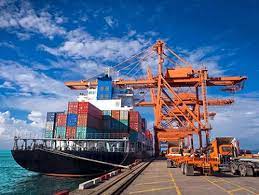
Top challenges faced by the EXIM community
MUMBAI : For any company that’s involved in global trade and commerce, importing and exporting goods is central to its business operation. The EXIM industry accounts for a sizeable portion of the total business revenue earned by the country and also a major bulk of the national economic engine. With countless shipments being transported across both domestic and international borders, EXIM organizations are facing numerous operational roadblocks such as surging freight charges, container availability, shipment visibility, and a below-par customer experience.
This is primarily a result of poorly managed processes in the erstwhile shipping and logistics industry. While certain factors are beyond a company’s control, several others can be tightened. The logistics and freight ecosystem should focus to capitalize on verticals that are disruption-ready. The solution lies in leveraging technologies to not only streamline operations by bringing importers and exporters closer but also to dissipate the disproportionate advantage that until now was only accessible to large enterprises.
Navigating across the global trade is a complex ordeal that poses many hurdles such as:
Lack of a level playing zone
Lack of technology for demand visibility creates the problem of differential pricing. Megacorporations stand to gain higher ground on negotiations and inclinations due to the enormous volume and scale of their shipments. The disparity between the freight cost for a larger corporate freight and a smaller one can go as high as 5X. Technology deployment can improve demand visibility which can help the shipping lines to provide competitive freight to the smaller players.
Inefficient process for freight procurement
Companies must augment their point solutions and effectively partner with both internal and external stakeholders. This aids in amplifying their operational ambit, optimize freight purchases, facilitate business-friendly freight rates with several rounds of vendor negotiation by digitizing operations.
Incidental costs
There is an urgent need to curb the growing cost spills that occur at every stage of logistic operations. These leakages primarily erupt due to a lack of visibility, inefficient invoicing, and absence of teamwork and hence, need to be supervised. Enhanced shipment visibility helps mitigate additional costs and bringing them down to zero. While larger corporates tend to have the processes and tools in place, the medium and small enterprises miss out on actionable insights that can help avoid additional expenses.
Well, technology can pave the road for smaller corporations to become smarter enabling invoice reconciliation and avert other avoidable expenses.
Significant man-hours consumption
The EXIM industry is still utilizing outmoded modes of technology as compared to other industries.
Numerous import and export enterprises still depend on emails, telephone calls, and faxes for coordination and communication purposes. Significant man-hours that could be utilized for other productive activities such as securing international business go into the struggle to manually streamline communication and other redundant processes. This lack of computerization results in human errors and setbacks.
Furthermore, the bulk of their data is dispersed across exhaustive and complex point solutions such as ERPs, WMS, TMS, and others. The scarcity of a unified genuine source of information regarding the movement of containers causes faulty monitoring and mismanagement. As a result, instead of getting resolved the problem is only being compounded, delaying the entire process.
New-age shipping solutions offer conducive platforms for global trade and logistics management by providing AI and Data-powered frameworks that give a holistic view of container motion. ML-powered smart automated workflows can assist businesses to comprehensively digitize their operations.
Subpar customer experience
Customer experience is of utmost importance. The relentless technological advancement has made customers more knowledgeable and demanding. However, the lack of real-time visibility causes revenue slips and missed opportunities. EXIM enterprises must leverage technology to extend a bespoke and customized customer experience.
Besides, reliability adds credibility to the brands. A satisfied customer creates more business opportunities. Higher customer satisfaction has a positive effect on brand trust which directly impacts the revenue.
Lack of agility to counter disturbances
Several recent pivotal occurrences such as the Suez Canal crisis or the COVID-19 pandemic have exposed glaring loopholes in the global trading landscape. There is an urgent need for companies to rise against the constant flow of turbulence and tackle demand-supply disruptions by embracing digitization and new-age logistics solutions. Having visibility over demand could not only help pre-empt such a crisis but also effectively distribute your supply to minimize the supply chain disruption. For this, import and export companies must develop agile systems that run on intelligent deductions and prediction models, robust third-party integrations, automation, optimizations, and omnichannel communications.
All in all, due to the apparent lack of automation and the dependence on manual modes of functioning, the exporters and importers are plagued by the ever-increasing costs. Moreover, they are unable to exploit promising revenue-enhancing prospects due to subpar customer service and lack of business expansion, agility, and ideation. An overarching digital transition is the best way forward for EXIM organizations to revolutionize the stagnant logistics and trading sector. Digitization can also help exporters and importers to establish an equal playground across the market.
Source : Times of India (Author : Soham Chokshi, CEO & co-founder of Shipsy)
